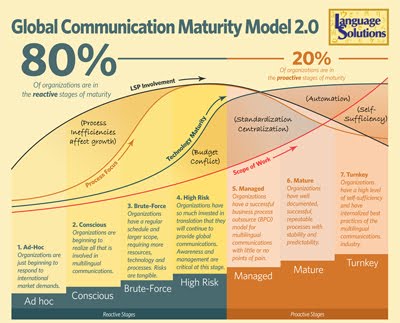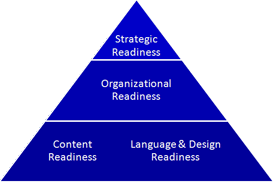We track all of our quote performances which enable us to see how well we do in converting bid requests into 'wins'. This helps us to understand if we really understood what the client's requirements were, what their constraints were, what they expected and revealed and what they didn't reveal.
Recently, we received a quote request for some updates to work that we originally did a quote on in 2008; a loss at the time.
Now, four years and several copy updates further, we were doing the updates to translation work that (several) previous vendors had done in the last 4 years. It was not a cheap update. The client spent
close to half of the original quote amount on doing new updates; updates that were missed by previous vendors. Many of the costs also came from having to rework existing translations so that it matched the English; mostly manual work. The original quote was for doing the whole translation from scratch and in the long run...would have been a much better investment!
It poses an interesting question: How much money did this client really save by not going with us in the first place? We don't know how much the client paid for the original translation, but we do know that the relatively simple updates to this book could have been far more cost effective if we had done the work up front.
We wrote a blog entry a
few years back that potential pains that follow from purchase decisions usually become apparent after the fact. While we try to explain the benefit of our processes as much as possible, it is unfortunate that the real cost benefit becomes clear when it is too late. In this case study, we highlight the following benefits from our processes that could have avoided some of those pains:
- Asset Building - It's hard to put a price on this, but translation work become an asset if you manage it well (there is a cost to that) and make it accessible when doing future updates. Without any Translation Memory, maintaining consistency of terminology becomes a costly and messy manual process. It takes time to read through work that has been done before and identify and apply that to future updates. Add the manual work of updating glossaries and index work to it and it becomes clear that the time invested in manual research could easily outweigh the investment in maintaining a good Translation Memory. The problem with the manual processes is that there is always a bigger chance for error as opposed to a systematic process that we maintain.
- Version Control - Version control is tied with Asset Building. Knowing what has been translated before and what has not removes the pain of manually comparing translations against the source language. Version control can become a real burden when updates are made to the source copy through different reviewers. No matter how good you keep track of changes, things can slip through and without proper management, you will never know what has been done before and what is now current. We keep a version of both the source and target language of every project so that we can always compare updates to the latest control copy that was used for translation. Changes are easily identified at the word level in our Translation Memory software.
- Qualified Teams of Professional Translators - Rework of past translations is a costly endeavor, whether you have maintained a Translation Memory asset or not. There is no one way to translate something, but when certain punctuation and capitalization rules have not been followed, identifying and correcting those issues becomes a manual process that will take time to do properly across the board. Qualified translators keep up with the latest linguistic requirements. We also maintain the same team of translators for a project as much as possible, which helps with maintaining consistency in style and preference in wording. We work hard to make sure these teams remain available and they come back to us to do the work because we are organized and invest in the relationships we have built over the years.
- Quality Control - Translation does not stand on its own. It usually gets worked into a final product such as a design file or a website. While we work hard to eliminate as many manual processes from that conversion in our process, there are always manual processes in refining the copy. Each document that goes out has been proofed by the linguist to ensure proper display. Without that process, errors can easily build up over years and identifying and correcting these issues becomes a costly manual process.
We wrote earlier that it is important to
understand what you buy and compare apples to apples when deciding on various quotes. It's not always an easy decision and budgets sometimes do not support the investment that you want to make up front; but consider in your bidding process the future cost and impact that these decisions could have on your budget. This case study could help make that decision for this client and we're always here to explain this further to support the budget needs for your next project.










